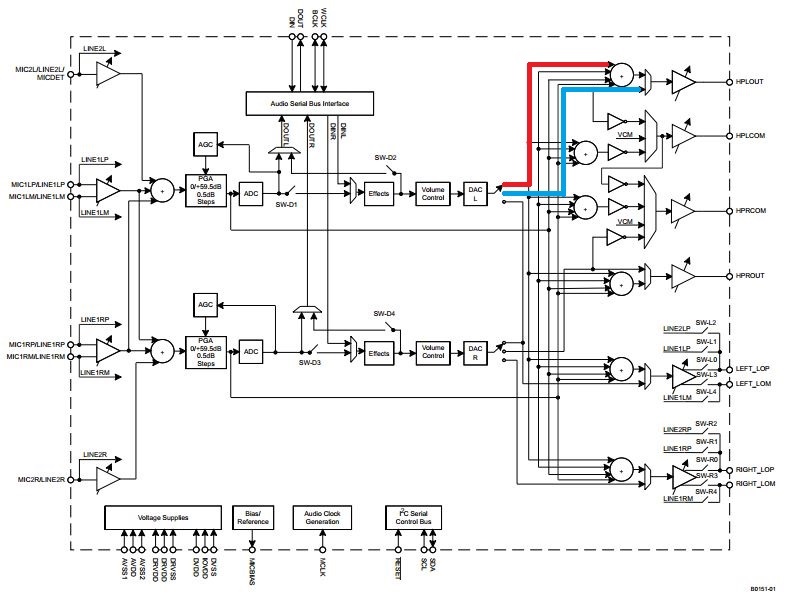I have a custom cape on a Beaglebone Black that uses a tlv320aic3104, connected to a tpa3140d2 audio power amp. I currently manually control the /shudown pins on the two ICs, and just turn them on before doing anything else. The device is used for playback of digital audio data sent from the BBB.
The system works. But I notice that when I open the output device for writing (via libao and ALSA), I immediately hear hiss, even before I send any samples to the device. After I close the libao audio device, a few seconds later Linux sends some i2c commands to the tlv320 and it's once again silent.
The perceived amplitude of this hiss does not seem to be affected by "amixer set PCM <0 - 127>" calls.
Does anyone have any idea where this noise might be coming from? Is it just thermal or other noise in the routing of audio within the tlv320? Is there some configuration or routing I might be able to change to avoid it? Did I screw up somewhere in my circuit design or layout that only manifests when linux configures the chip for operation?
Any ideas are appreciated. Thanks.
-
Ask a related question
What is a related question?A related question is a question created from another question. When the related question is created, it will be automatically linked to the original question.




